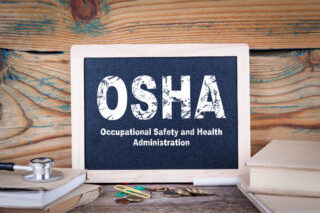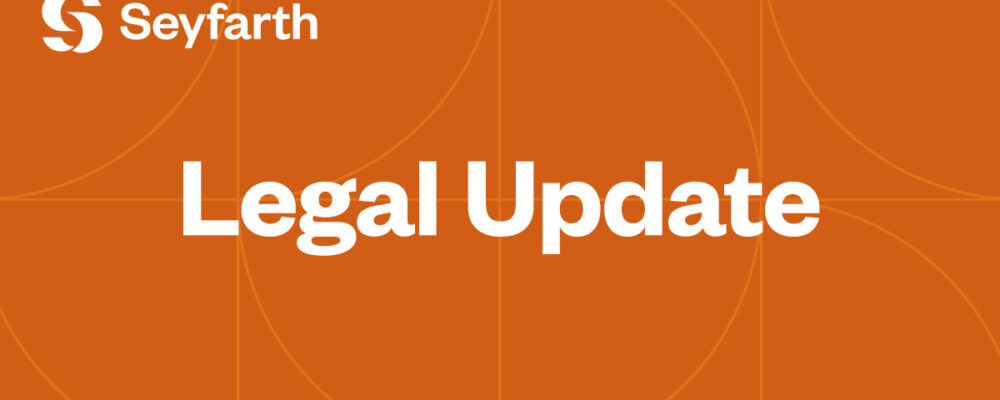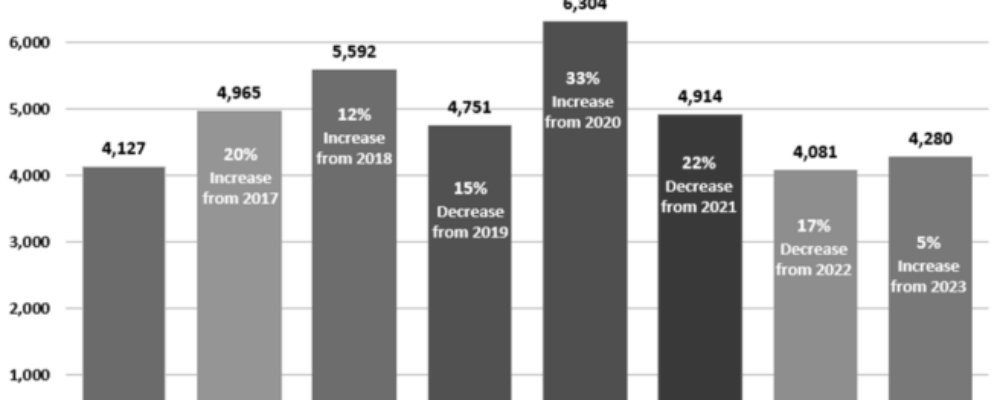By Brent I. Clark, James L. Curtis, Patrick D. Joyce, A. Scott Hecker, Daniel R. Birnbaum, Melissa A. Ortega and Taylor Iaculla
Seyfarth Synopsis: This week we are attending the ABA Occupational Safety and Health Law Meeting in San Juan, Puerto Rico. The meeting includes representatives from the U.S. Department of Labor, OSHA Review Commission, the MSHA Review Commission, OSHA and MSHA Judges, and the Solicitor’s Office, as well as management, labor, and safety professionals.
Day 2 started with a panel discussion on recent case law with significant impacts on workplace safety. The panelists discussed a recent Supreme Court case concerning whistleblowers, reflecting yesterday’s theme of protecting workers from retaliation. In the case, on appeal from the Second Circuit, the Supreme Court held that whistleblower claims must only satisfy the lower contributing factor standard as opposed to a heightened standard the Second Circuit attempted to impose. The panel also highlighted a recent case involving powered industrial truck (PIT) underride citations that were vacated by the appellate court after the Review Commission declined to review. The employer was cited under the general duty cause for exposing its truck operators to underride hazards. The appellate court noted that such citation was preempted by the PIT training standard, despite the standard not explicitly referencing the underride hazard. The court found that because the specific PIT standard included a training clause, and OSHA had previously used the very same training rule to cite a PIT underride hazard – in a case where we were involved and successfully defended a client – this was enough to preempt use of the general duty clause. According to Edmund Baird, Associate Solicitor, Division of Occupational Safety and Health, the decision is considered by OSHA and the Solicitor’s office to be a “troubling case” that can make enforcement of underride issues through the general duty clause in the future “difficult.”
The panel then addressed the recent trend of constitutional challenges to government agencies’ authority. As discussed in yesterday’s blog post, these challenges seek to revise or replace the Chevron doctrine, which affords government agencies’ regulatory interpretations a level of deference when those interpretations are challenged. The panelists posited that decisions seeking to alter the current framework may result in the adoption of the Skidmore framework, which restricted deference based on an analysis of the agency’s consistent interpretation of the law it seeks to enforce. The panelists also cautioned that if Chevron is overturned and new administrations attempt to revise the regulatory framework through agency interpretation, they will not be afforded the same level of deference they might otherwise expect.
The next panel discussed safety and health obligations for foreign workers, how those obligations affect employers, and OSHA’s regulatory efforts. The panel discussed the legal and business challenges faced by employers in ensuring vendors and contractors comply with laws, and reminded the attendees of the importance of utilizing written contracts with vendors or contractors. The panel also acknowledged potential issues when sending its own employees abroad, and the need to assess safety and health risks associated with relevant countries and develop policies addressing such issues. Further, Emily Hargrove, Chief of Staff to the Assistant Secretary of OSHA, discussed OSHA’s current focus on protecting foreign workers through various means. This includes a focus on foreign workers employed in the United States in the residential roofing, meat and poultry, warehouse and distribution, and agriculture industries. OSHA is also focused on developing relationships with consulates and countries such as Mexico, El Salvador, and Honduras to educate migrant workers of their rights.
The conference then split into break-out sessions. During a session on discrimination, the panel looked at how workplace discrimination and harassment could be addressed by workplace safety laws, including as a workplace violence incident under the general duty clause. The panel noted recent OSHA investigations and interest related to such issues, most commonly where employees allege they have been subjected to discrimination culminating in incidents of workplace violence.
We also attended a breakout session regarding updates on State OSHA Plans. The panel provided a robust discussion of the unique challenges and benefits State Plan states have when regulating employee safety and health in their jurisdictions. Judith Cruz Concepción, Assistant Secretary of the Puerto Rico Occupational Safety and Health Administration, spoke on the challenges Puerto Rico OSHA experiences related to staffing of compliance officers, access to employers who may not have a physical presence in Puerto Rico other than workers, and meeting various benchmarks outlined by federal OSHA for State Plans. Concepción mentioned that certain federal OSHA Emphasis Programs, such as the Heat NEP, are simpler to enforce in Puerto Rico because employers are already cognizant of the hazards presented from working in hot weather and proactively addressing those hazards, given that Puerto Rico experiences temperatures around or above 80 degrees Fahrenheit year-round.
Elliot Furst, Senior Counsel in the Washington Attorney General’s Office, discussed differences between State Plan states, their funding arrangements, and their ability to address hazards unique to their states. Furst indicated that Washington is capable of quickly pivoting to address hazards unique to the State, including heat illness, wildfire smoke, and ergonomics because the agency’s funding source is not tied to the general fund and the legislature does not actively monitor the agency. This observation creates an interesting incentive structure and helps explain our experience with the agency, their aggressive enforcement agenda, and focus on newly-identified hazards. We also heard about the practical differences related to advocating on behalf of employers or employees in State Plan states compared to federal OSHA jurisdictions.
At a separate Cal/OSHA breakout discussion, panelists focused on two topics that have consistently been on OSHA’s radar in recent years: heat and ergonomics. The panel discussed OSHA’s efforts to address both issues, which are currently regulated under the general duty clause. Regarding ergonomics, best practices for employers were discussed, including focusing on developing the proper policies and programs to address such issues in the workforce. Concerning inspection management, the panel spoke on the potential for employees to demonstrate lifting or related movements during OSHA inspections, which may run contrary to a company’s standard operating procedures or training. As such, employers should proactively work to address these issues. Turning to heat, the panel discussed the increasing prevalence of heat illness, the challenges in addressing such issues, and the status of OSHA’s rulemaking on a heat illness standard. The panel stressed training for employees, as well as awareness of various State Plan states, especially on the west coast, that may have specific standards addressing heat. Lastly, the panel acknowledged the challenges employers may face in keeping an engaged workforce that is aware of heat hazards and the importance of taking action to use a company’s resources that will keep employees safe.
Finally, a panel discussed ethical issues arising from AI and big data, addressing potential ethical issues surrounding the use of AI and big data as it relates to safety and health. The panelists considered the benefits and pitfalls of utilizing AI and big data in assessing safety and health hazards in the workplace. Currently, technology can help employers monitor safe work practices and help evaluate potential hazards. However, use of such technology may lead to increased risk if employers fail to address hazards that AI or data have indicated pose safety and health hazards. These issues necessitate the need for updating policies and procedures to effectively sort and evaluate information derived from AI and big data.
“With approximately 900 lawyers across 17 offices, Seyfarth Shaw LLP provides advisory, litigation, and transactional legal services to clients worldwide.”
Please visit the firm link to site





